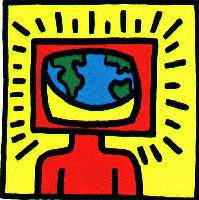 WNKW made a return appearance on 'Fringe' this past week. As I mentioned in an earlier post, WNKW should be a NYC TV station, as it was the place of employ for the main characters in 'Jack & Jill'. Before, my splainin was that its reporters were filing news reports that were then picked up by other news outlets from outside their broadcast area. This would splain why WNKW showed up onscreen from the Homestead, Florida, region in 'Invasion', and why it appears now on 'Fringe' which is generally taking place in the Boston area.
WNKW made a return appearance on 'Fringe' this past week. As I mentioned in an earlier post, WNKW should be a NYC TV station, as it was the place of employ for the main characters in 'Jack & Jill'. Before, my splainin was that its reporters were filing news reports that were then picked up by other news outlets from outside their broadcast area. This would splain why WNKW showed up onscreen from the Homestead, Florida, region in 'Invasion', and why it appears now on 'Fringe' which is generally taking place in the Boston area. However, this doesn't splain why the call letters were for Channel 42 in the first episode, and for Channel 5 in the second.
 There could be three ways to go with this.
There could be three ways to go with this.1) Two different TV channels in the Boston area picked up the news reports from WNKW, probably small independent stations without the facilities to produce their own news broadcasts.
2) Channel 42, being a UHF station, could be a satellite for Channel 5, which would have the stronger signal, but which might not reach the area covered by 42. (I don't know if this still happens, but I know it used to be widespread just in the smaller state of Connecticut back when I was growing up there.)
3) The station that has the contract for use of WNKW news reports applied for and received permission from the FCC to upgrade their signal from UHF 42 to VHF 5.
Perhaps most of these crunchy bits of pretzel logic (Sorry, been in a Steely Dan mood all week) might not make sense or are not feasible in the real world. But then again, the rules can be different in Toobworld.
BCnU!
Toby O'B




No comments:
Post a Comment